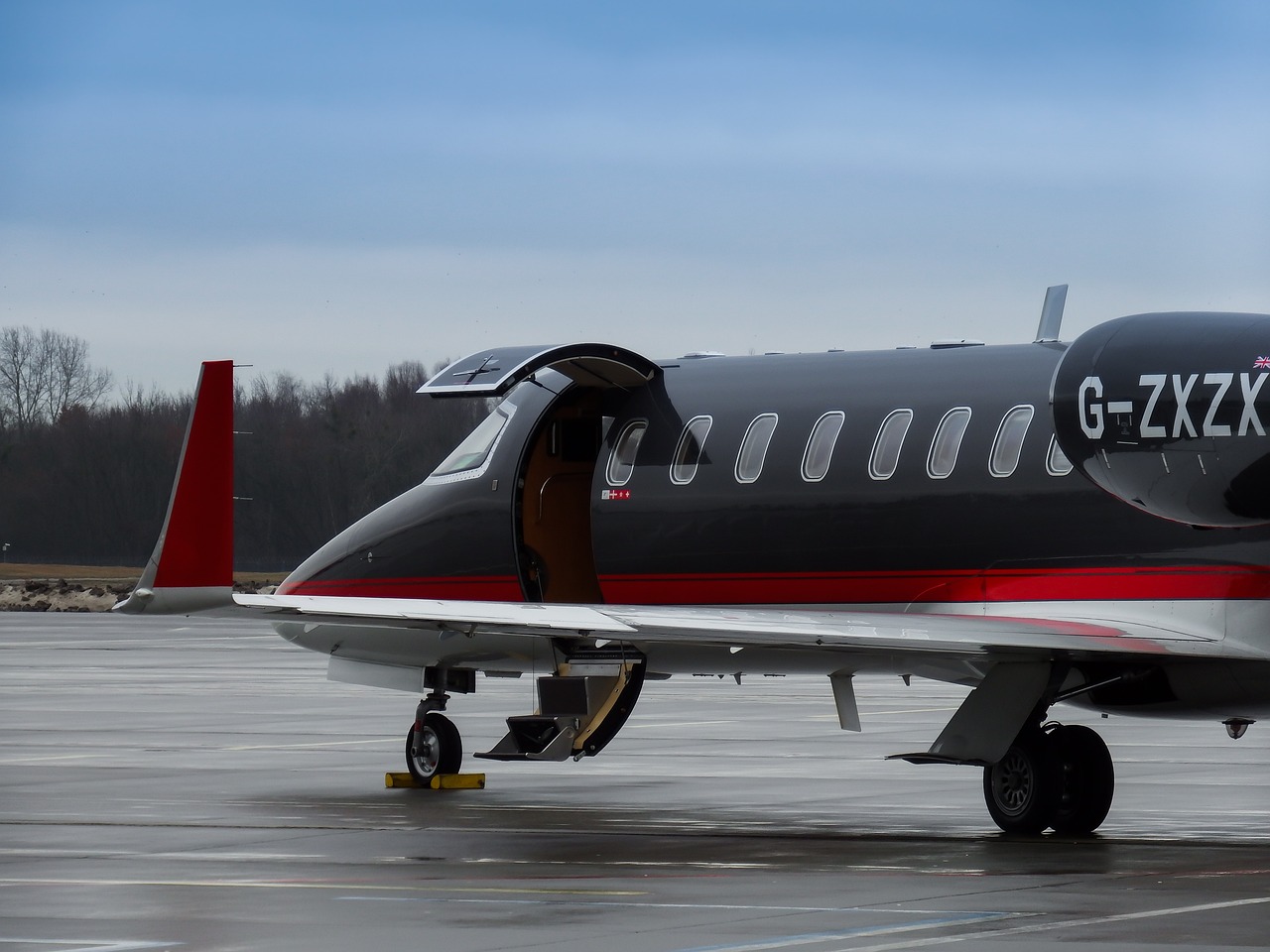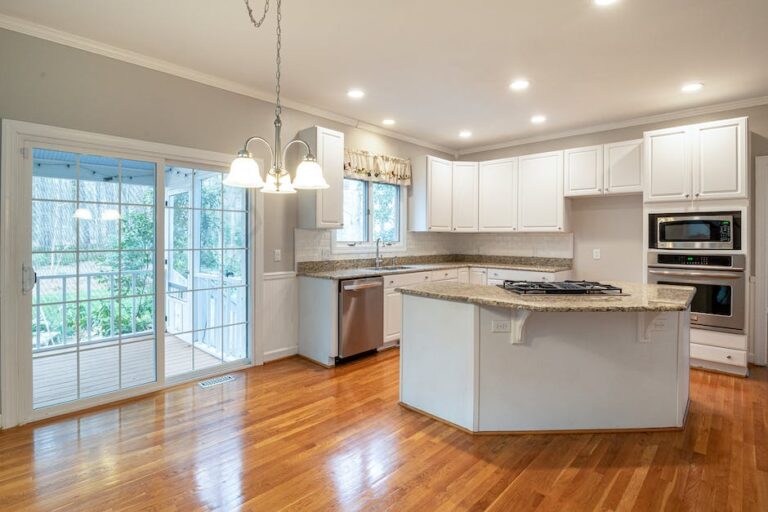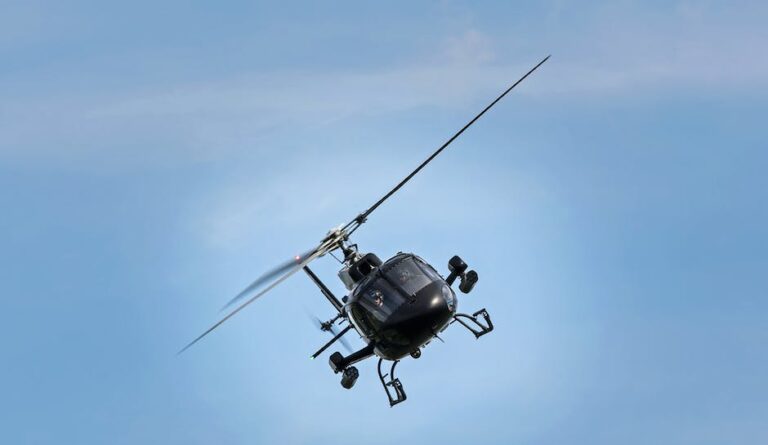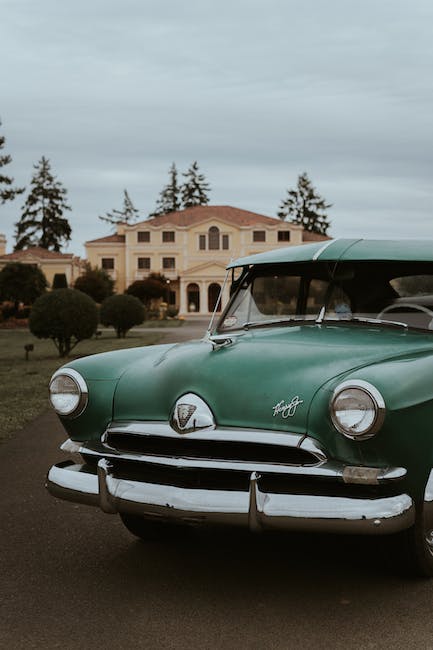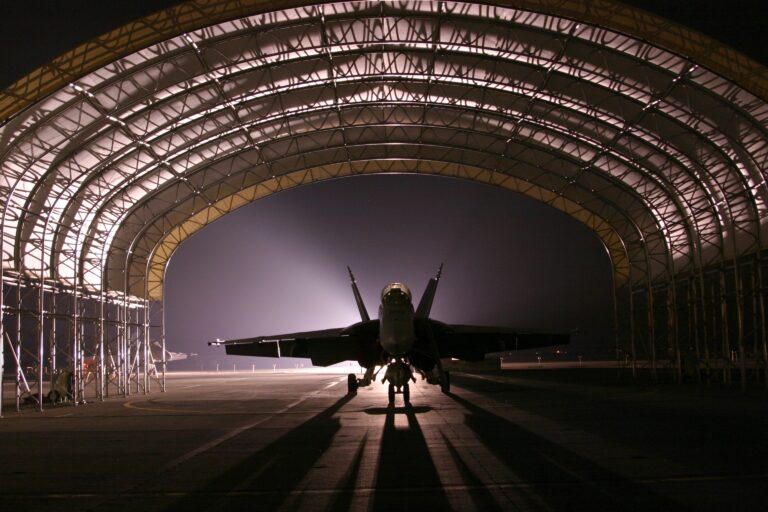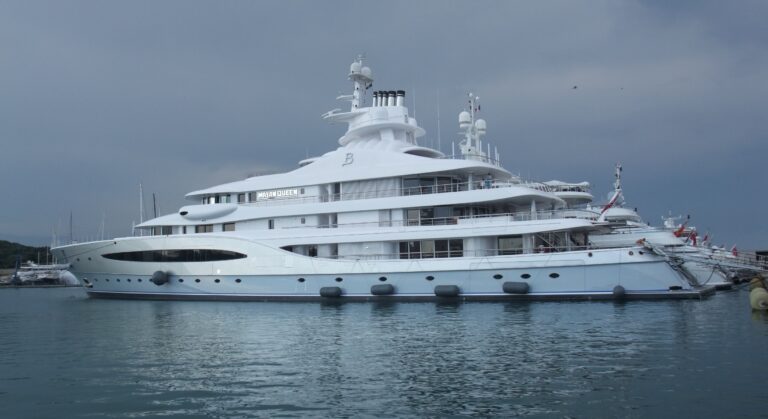What Is the Useful Life of a Private Jet
Beneath a cerulean sky, a behemoth of luxurious splendor soars through the heavens, leaving an iridescent trail in its wake. The private jet, an emblem of opulence and exclusivity, has long captivated the imaginations of the elite. From high-powered executives to Hollywood movie stars, these magnificent flying machines whisk their privileged passengers to distant lands, where dreams and aspirations are born anew. However, behind the glitz and glamor lies a pressing question that echoes through the corridors of aviation enthusiasts worldwide: what is the useful life of a private jet? In this article, we delve into the fascinating realm of private aviation to unravel the mystery surrounding these celestial chariots and explore the factors that dictate their ephemeral reigns in the sky.
Table of Contents
- Understanding the Lifespan of Private Jets: Exploring Factors That Influence Their Useful Life
- Maintenance and Care: Ensuring Longevity and Optimal Performance of Private Jets
- Technology Upgrades: Efforts to Extend the Useful Life of Private Jets
- Environmental Considerations: Adapting Private Jets for Sustainable and Efficient Operation
- Resale Value and Depreciation: Managing Factors That Impact the Useful Life of Private Jets
- Smart Investment Strategies: Maximizing the Useful Life of Your Private Jet
- FAQs
- The Conclusion
Understanding the Lifespan of Private Jets: Exploring Factors That Influence Their Useful Life
When it comes to private jets, there are various factors that influence their lifespan. Understanding these factors is crucial for potential buyers and current owners alike. From the type of aircraft to the maintenance regime, each element plays a key role in determining just how long a private jet can remain in service. Here are a few factors worth exploring:
- Aircraft model: The model of the jet itself can significantly impact its useful life. Different models are designed and manufactured with varying qualities and levels of durability, affecting how long they can remain operational.
- Flight hours and cycles: The total number of flight hours and takeoff-landing cycles an aircraft has undergone can put stress on its structural components and engines. The more hours and cycles logged, the closer the aircraft may be to its useful life limit.
- Maintenance and inspections: Regular maintenance and inspections are essential for ensuring the longevity of a private jet. Routine inspections, repairs, and adhering to the manufacturer’s recommended maintenance schedule can significantly extend the useful life of the aircraft.
- Technological advancements: The rapid advancement of aviation technology can influence the useful life of private jets. As newer, more efficient models hit the market, older aircraft may become less desirable, impacting their resale value and overall lifespan.
By considering these factors, individuals can gain a deeper understanding of the complex dynamics that contribute to the useful life of private jets. Whether acquiring a new aircraft or maintaining an existing one, being aware of these influences is essential for making informed decisions and maximizing the value of private jet ownership.
Maintenance and Care: Ensuring Longevity and Optimal Performance of Private Jets
When it comes to private jets, proper maintenance and care are paramount to ensure their longevity and optimal performance. Here are some crucial steps to follow:
- Frequent inspections: Regular inspections by certified technicians are essential to detect any potential issues before they evolve into major problems. From the engine to the interior, a thorough examination ensures that your private jet operates smoothly.
- Adherence to manufacturer guidelines: Following the manufacturer’s maintenance guidelines is crucial to keep your jet in top-notch condition. This includes adhering to recommended service intervals, replacing parts when necessary, and complying with any specific requirements for your aircraft model.
- Proactive maintenance: Don’t wait for something to break; be proactive in your maintenance approach. Regularly check for wear and tear, perform preventive measures, and promptly address any minor issues to prevent them from escalating.
- Cleaning and detailing: Just like any prized possession, your private jet requires regular cleaning and detailing. Ensure that the aircraft’s exterior is free from dirt and grime, and the interior is spotless. This not only enhances its appearance but also prevents corrosion and deterioration.
- Adequate storage: Protecting your private jet from harsh environmental conditions is vital. Ensure it is stored in a secure hangar or a suitable location that shields it from extreme temperatures, humidity, and potential damage.
- Regular training for the crew: Alongside maintenance, proper training for the crew is of utmost importance. They should be knowledgeable about emergency procedures, safety measures, and be well-versed in routine maintenance tasks to ensure the overall well-being of the aircraft and its passengers.
By following these maintenance and care practices, you can guarantee the longevity and optimal performance of your private jet, providing you with a smooth and luxurious travel experience for years to come.
Technology Upgrades: Efforts to Extend the Useful Life of Private Jets
Private jet owners are constantly seeking innovative technology upgrades to enhance the performance and extend the useful life of their beloved aircraft. The aviation industry has been quick to respond, introducing a range of cutting-edge advancements that reflect the ever-evolving landscape of air travel. From advanced avionics systems to state-of-the-art engine modifications, these upgrades are not only reshaping the way private jets operate but also ensuring that they remain at the forefront of aviation excellence. By embracing these advancements, private jet owners can enjoy a myriad of benefits, including improved safety, increased efficiency, and enhanced passenger comfort. Some noteworthy technology upgrades available for private jets include:
- Next-Generation Avionics: The integration of advanced avionics systems allows pilots to have access to real-time flight data, weather updates, and enhanced navigation capabilities. This not only ensures smoother flights but also enables pilots to make informed decisions quickly, enhancing overall safety and efficiency.
- Aerodynamic Enhancements: By implementing innovative aerodynamic upgrades, private jets can achieve increased fuel efficiency, reduced emissions, and improved overall performance. These upgrades may include winglets, modified airframes, and other design enhancements that maximize aircraft efficiency.
- Upgraded Engine Technology: Engine upgrades, such as those utilizing quieter and more efficient turbine engines, not only improve the overall performance of private jets but also contribute to a reduced environmental footprint. These enhancements result in quieter takeoffs and landings, increased range, and improved fuel economy.
- Cabin Comfort Innovations: For those who enjoy the luxurious experience of private jet travel, various cabin comfort upgrades are available. These may include noise-canceling technologies, improved air quality systems, mood lighting options, and cutting-edge in-flight entertainment systems, all of which are designed to provide an impeccable and personalized flying experience.
As technology continues to advance, the possibilities for upgrading private jets are virtually limitless. These ongoing efforts to extend the useful life of private jets not only benefit and delight owners, but also ensure that these magnificent aircraft remain a symbol of elegance and sophistication in the world of aviation.
Environmental Considerations: Adapting Private Jets for Sustainable and Efficient Operation
In today’s fast-paced world, private jets are indispensable for business travel and personal convenience. However, as we strive for a more sustainable future, it’s crucial to address the environmental impact of these luxurious aircraft. Adapting private jets for sustainable and efficient operation is a pressing need that requires innovative solutions. Here are some key considerations:
- Investing in Alternative Fuels: Moving away from traditional fossil fuels, private jet owners can explore sustainable alternatives like biofuels or hydrogen, reducing greenhouse gas emissions and mitigating environmental harm.
- Optimizing Flight Routes: By utilizing advanced technology and data analysis, private jet operators can identify time-saving and fuel-efficient flight paths, minimizing both travel time and carbon footprints.
- Reducing Weight and Waste: Lightweight materials and improved waste management systems onboard private jets can significantly reduce fuel consumption and minimize environmental impact.
- Implementing Efficient Maintenance Practices: Regular maintenance and adherence to strict operating procedures not only ensure safe travel but also optimize fuel efficiency, reducing emissions and extending the life cycle of the aircraft.
By adopting these environmental considerations, the private aviation industry can adapt to sustainable practices while still providing the utmost comfort and convenience to its passengers. It is through proactive measures like these that we can build a greener future without compromising the luxury and efficiency offered by private jets.
Resale Value and Depreciation: Managing Factors That Impact the Useful Life of Private Jets
Factors that Impact the Useful Life of Private Jets:
When considering the resale value and depreciation of private jets, it is important to take various factors into account. These factors play a significant role in determining how long a private jet remains useful and how its value holds over time. Here are some key factors to manage when assessing the longevity of private jets:
- Flight Hours: The number of hours a jet has been flown directly affects its resale value. High flight hours generally indicate that the aircraft has been extensively used, which can result in increased wear and tear, potentially impacting the market price.
- Maintenance and Upkeep: Regular maintenance is crucial for preserving the value of a private jet. Ensuring that all required inspections, repairs, and upgrades are promptly carried out helps maintain the aircraft’s overall condition, positively influencing its resale value.
- Age and Technology: Newer models and advanced technological features tend to have higher demand and retain their value better than older jets. Staying up-to-date with the latest avionics, navigation systems, and comfort amenities can enhance the long-term value of a private jet.
- Interior and Exterior Condition: The overall appearance of a private jet greatly impacts its marketability. A well-maintained interior with up-to-date furnishings and a pristine exterior paint job can significantly increase its desirability and, consequently, its resale value.
By actively managing these factors, private jet owners can optimize the resale value of their aircraft and extend its useful life in the luxury aviation market.
Smart Investment Strategies: Maximizing the Useful Life of Your Private Jet
In order to ensure that your private jet remains functional and efficient for as long as possible, it is essential to implement smart investment strategies that maximize its useful life. By making wise choices and taking proactive measures, you can save money in the long run while maintaining the optimal performance of your aircraft. Here are some key strategies to consider:
- Regular maintenance: Conducting routine inspections and adhering to a comprehensive maintenance schedule is crucial for preserving the longevity of your private jet. By addressing any issues promptly and regularly servicing your aircraft, you can prevent major problems and extend its useful life.
- Upgrading technology: Keeping up with advancements in aviation technology can greatly enhance the efficiency and safety of your private jet. By investing in state-of-the-art avionics, communication systems, and performance upgrades, you can ensure your aircraft remains competitive and functional for years to come.
- Training and education: Ensuring that your pilots and maintenance technicians receive ongoing training and education is crucial for maintaining the integrity of your private jet. Staying abreast of the latest industry standards, regulations, and best practices can help prevent avoidable accidents and minimize costly repairs.
- Investing in quality interiors: The interior of your private jet plays a significant role in its overall lifespan. Opting for durable materials, ergonomic designs, and timeless aesthetics can help withstand wear and tear while maintaining the value and appeal of your aircraft.
By implementing these smart investment strategies, you can maximize the useful life of your private jet and ensure that it continues to provide unparalleled luxury and convenience for years to come.
FAQs
1. Q: How long can a private jet last?
A: A private jet’s lifespan can vary widely depending on factors such as the model, maintenance practices, and usage. On average, a well-maintained private jet can last anywhere from 25 to 40 years or more. Regular maintenance, upgrades, and adherence to manufacturer recommendations are crucial in ensuring the aircraft’s longevity and safe operation throughout its service life.
2. Q: Is there a specific lifespan for private jets?
A: Unfortunately, there isn’t a one-size-fits-all answer. Most private jets have an estimated lifespan of around 25-40 years, but this can change based on various factors. It’s like asking, “What’s the lifespan of my favorite pair of jeans?”. It all depends on how well you take care of them.
3. Q: Can a private jet operate indefinitely?
A: While it would be wonderful to envision your private jet soaring through the skies for eternity, like a magical metal bird, it’s not quite feasible. Eventually, maintenance costs might outweigh the aircraft’s value, or newer, more efficient models might tempt you. A jet’s useful life usually ends when it’s no longer economically viable or when its technology becomes outdated.
4. Q: Does the type of private jet affect its useful life?
A: Absolutely! Different aircraft types have varying lifespans. For instance, lightweight business jets are generally designed for shorter useful lives, ranging from 20 to 25 years. Larger, long-range private jets can potentially keep flying for 30 years or more. Each model is crafted with a specific purpose and technological framework that influences its useful life.
5. Q: Can private jets be refurbished to extend their useful life?
A: Certainly! Many owners opt for refurbishment to extend the useful life of their flying chariots. This process can be as simple as refreshing the interior design or as complex as updating avionics systems. Proper refurbishment can breathe new life into an older jet, making it feel like a swanky, state-of-the-art paradise once again.
6. Q: How does maintenance affect a private jet’s lifespan?
A: Ah, the crucial question. Regular maintenance and adherence to manufacturer guidelines are paramount in ensuring a jet’s long and fruitful life. Following routine inspections and keeping up with repairs is key. Think of it as giving your jet regular checkups and TLC to keep it soaring gracefully through the skies.
7. Q: Can I sell or trade in my private jet before its useful life is over?
A: Absolutely! Private jets can be bought and sold at any point during their lifespan. Just like a fancy sports car, you can trade up to a newer model or sell your aircraft if you find yourself craving a change. Of course, the jet’s value will depend on factors like age, condition, and market demand.
8. Q: Is there a certain number of flight hours when a private jet is considered old?
A: No, not really. The number of flight hours alone cannot determine if a private jet is old or near the end of its useful life. It’s like asking if someone is old based solely on the number of candles on their birthday cake. Flight hours matter, but factors like maintenance, technology advancements, and overall condition play significant roles as well.
9. Q: Can private jets become museum artifacts once they’re retired?
A: Absolutely! Some private jets that have reached the end of their useful lives might find themselves fortunate enough to retire in style, becoming museum artifacts. These glamorous aircraft can educate and inspire future generations, reminding them of the marvels of aviation history. They get to trade the skies for a well-deserved spot in the limelight.
10. Q: Can you provide a TL;DR version of a private jet’s useful life?
A: Sure! The useful life of a private jet varies depending on maintenance, usage, and technology advancements. It typically ranges from 25 to 30 years, but can be extended through refurbishment. Jet lifespan also depends on personal decisions and economic viability. Remember, a private jet is like a faithful companion, and with proper care, it can make your dreams take flight for years to come!
Closing Remarks
As we float on the wings of knowledge through the clouds of curiosity, we finally bring our exploration of the useful life of a private jet to a gentle descent. Like a cluster of stars dotting the twilight sky, private jets have captivated our imagination for decades, emanating an aura of luxury and exclusivity. But just as the sun sets on each remarkable contrail, we find ourselves pondering the lifespan of these magnificent flying machines.
With every glamorous journey whisking the fortunate few to their desired destinations, private jets are the epitome of opulence entwined with precision engineering. From their glamorous entry into service to their eventual transition into a silent retirement, these flying marvels undergo an extraordinary voyage, leaving a glorious trail of memories in their wake.
Spanning across oceans and continents, these airborne vehicles navigate the skies defying gravity itself. Like aging warriors who have conquered countless battles, they are built to endure the test of time. From their meticulously crafted fuselage to their powerful engines that roar to life, each private jet is imbued with a lifespan that reflects its intended purpose and individual care.
Yet, no machine can defy the inexorable passing of time. Just as the earth evolves, so does the aviation industry. Their useful life, like a symphony’s crescendo, is influenced by various factors. Maintenance programs, technological advancements, and the ever-evolving demands of discerning travelers all play their part in determining the finite life of these majestic flying wonders.
As newer and more advanced models take their place in the sky, older private jets gracefully bow out from the limelight, retreating to the quieter corners of aviation history. But their story doesn’t end there. Like spirited mentors passing on their wisdom to the next generation, these veterans are often repurposed, finding new life as cargo planes, corporate shuttles, or even iconic relics adorning the entryways of aviation museums.
Each private jet lives a uniquely tailored life, from the seductive allure of its inaugural flight to its ultimate farewell in the sunset of its journey. Through years of meticulous maintenance, these magnificent birds are kept young at heart, defying their age with pride. And when the time comes for them to retire, their legacy continues to soar, imprinting upon the skies a testament to the heights humanity dares to reach.
Thus, as we bid adieu to the intriguing realm of private jets, let us remember their timeless elegance and the limitless possibilities they symbolize. Embarking on a journey beyond the clouds, their useful life is more than just a number; it is a testament to human ingenuity, the pursuit of excellence, and our timeless yearning to transcend the ordinary. So, may the spirit of a private jet forever inspire us to reach for the skies, knowing that limits exist only to be shattered, and horizons are meant to be explored.

